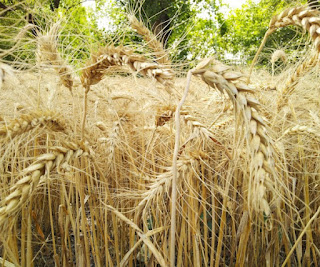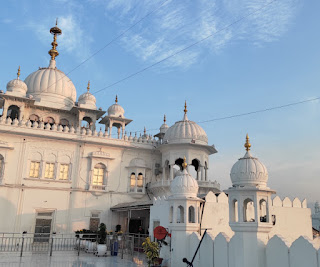Baisakhi, also known as Vaisakhi, is a harvest festival celebrated in India with great passion and fervour, particularly in the northern state of Punjab. It is mainly observed by the Sikh community, but it is also celebrated by Hindus and other communities as well. It marks the beginning of the new solar year and is considered a very important day for farmers as it is the time for harvesting the crops and preparing the fields for the next sowing season. This festival has great significance in the history of India, as it marks the formation of the Khalsa, a group of devoted Sikhs, by Guru Gobind Singh in 1699. In this blog post, we will explore the history, traditions, and celebrations of Baisakhi.
The formation of the Khalsa
The formation of Khalsa, also known as the Khalsa Panth, is a significant event in the history of Sikhism. It took place on April 13, 1699, during the Baisakhi festival in Anandpur Sahib, Punjab, India. The Khalsa is a community of initiated Sikhs who have committed themselves to follow the teachings of the Sikh Gurus and living by the highest ethical and moral standards.
The formation of the Khalsa was initiated by the tenth Sikh Guru, Shri Guru Gobind Singh Ji. On that day, he invited thousands of Sikhs from all over India to gather in Anandpur Sahib. He came out of his tent with a drawn sword and asked for a volunteer who was willing to sacrifice his head for his faith. After a few failed attempts, one of his devoted disciples, Bhai Daya Singh, came forward and offered his head. Guru Gobind Singh ji took Bhai Daya Singh inside his tent and returned shortly after with his sword covered in blood. He asked for another volunteer and repeated the process four more times. The five Sikhs who offered their heads were called the "Panj Pyare," or the "Five Beloved Ones."
Guru Gobind Singh ji then initiated the Panj Pyare into the Khalsa Panth by performing the "Amrit Sanchar," or the "Sikh baptism." He prepared a mixture of sugar and water in an iron bowl called "Amrit" and stirred it with a double-edged sword while reciting prayers from the Sikh scriptures. The Panj Pyare drank from the Amrit, and Guru Gobind Singh ji then drank from it as well. The appellation "Singh" was bestowed upon Sikh males, signifying "lion", while the surname "Kaur" was given to Sikh females, representing "princess". He declared that from that day on, the Khalsa would be the embodiment of the Guru and that every Sikh who wished to be initiated into the Khalsa would have to undergo the same ceremony.
The Khalsa was given a distinct identity by Guru Gobind Singh. He introduced the five articles of faith, called the "Panj Kakkar," that every Khalsa Sikh is required to wear at all times. These include kesh (uncut hair), kanga (a wooden comb), kara (a steel bracelet), kirpan (a short sword), and kachera (a special undergarment).
The formation of the Khalsa had a profound impact on Sikhism. It transformed the Sikhs into a powerful, disciplined, and dedicated community that was willing to sacrifice their lives for their faith. It also emphasized the importance of equality and brotherhood among Sikhs, as all Khalsa Sikhs are considered equal regardless of their caste, gender, or social status
Traditions and Celebrations of Baisakhi
In Punjab, where Baisakhi is widely celebrated, the festival coincides with the ripening of the Rabi crop, which includes wheat and other crops. On Baisakhi day, farmers in Punjab wake up early in the morning and offer thanks to God for the bountiful harvest. They also perform a special prayer called Ardaas, asking for blessings for a good harvest in the upcoming season. After the prayers, farmers start harvesting their crops and bring them home with great joy and enthusiasm. One of the most important traditions of Baisakhi is the Bhangra dance. Bhangra is a traditional dance of Punjab, and it is performed by men and women wearing colourful clothes and dancing to the beat of the dhol, a traditional Indian drum. The dance symbolizes the joy and happiness of the harvest season.
Another important tradition of Baisakhi is the Nagar Kirtan, which is a Sikh procession that is taken out on the streets. The procession is led by the Sikh holy book, Guru Granth Sahib, which is placed on a decorated palanquin. The procession is accompanied by kirtan, or devotional music, and is followed by devotees singing hymns and distributing sweets. Baisakhi is celebrated in different parts of India with other traditions and customs.
In other parts of India, Baisakhi is celebrated as the New Year and the harvest festival. People take a dip in the holy rivers, offer prayers, and perform puja, or worship, to the gods
In West Bengal, Baisakhi is known as Pohela Boishakh and is celebrated as the Bengali New Year. People wake up early in the morning, wear new clothes, and visit temples to offer prayers. They also prepare special delicacies like pithy, a traditional Bengali sweet, and alur dom, a spicy potato curry. The streets are decorated with colourful ribbons and banners, and cultural programs are organized in different parts of the state.
In Tamil Nadu, Baisakhi is celebrated as Puthandu, which marks the beginning of the Tamil New Year. People wake up early in the morning, bathe, and wear new clothes. They then prepare a special dish called the Puthandu Kanni, which is a platter of auspicious items like betel leaves, fruits, flowers, and coins. This platter is placed in front of the deity in the temple, and people pray for prosperity and good fortune.
In Kerala, Baisakhi is celebrated as Vishu, which marks the beginning of the Malayalam New Year. People wake up early in the morning and view the Vishukkani, which is an arrangement of auspicious items like rice, flowers, fruits, and coins, placed in a room in their house. They then perform puja to the deity and distribute sweets to their neighbours.
Conclusion
Baisakhi is a festival that brings people together, regardless of their religion or culture. It is a time to celebrate the bounty of nature, give thanks for the harvest, and pray for a prosperous new year. The festival is celebrated with great enthusiasm and fervour in different parts of India, and each region has its own unique traditions and customs. Baisakhi has a rich history that dates back to ancient India, and it is a symbol of unity, bravery, and devotion. Whether you are a Sikh, a Hindu, or a member of any other community, Baisakhi is a time to celebrate the spirit of India and the richness of its culture.



